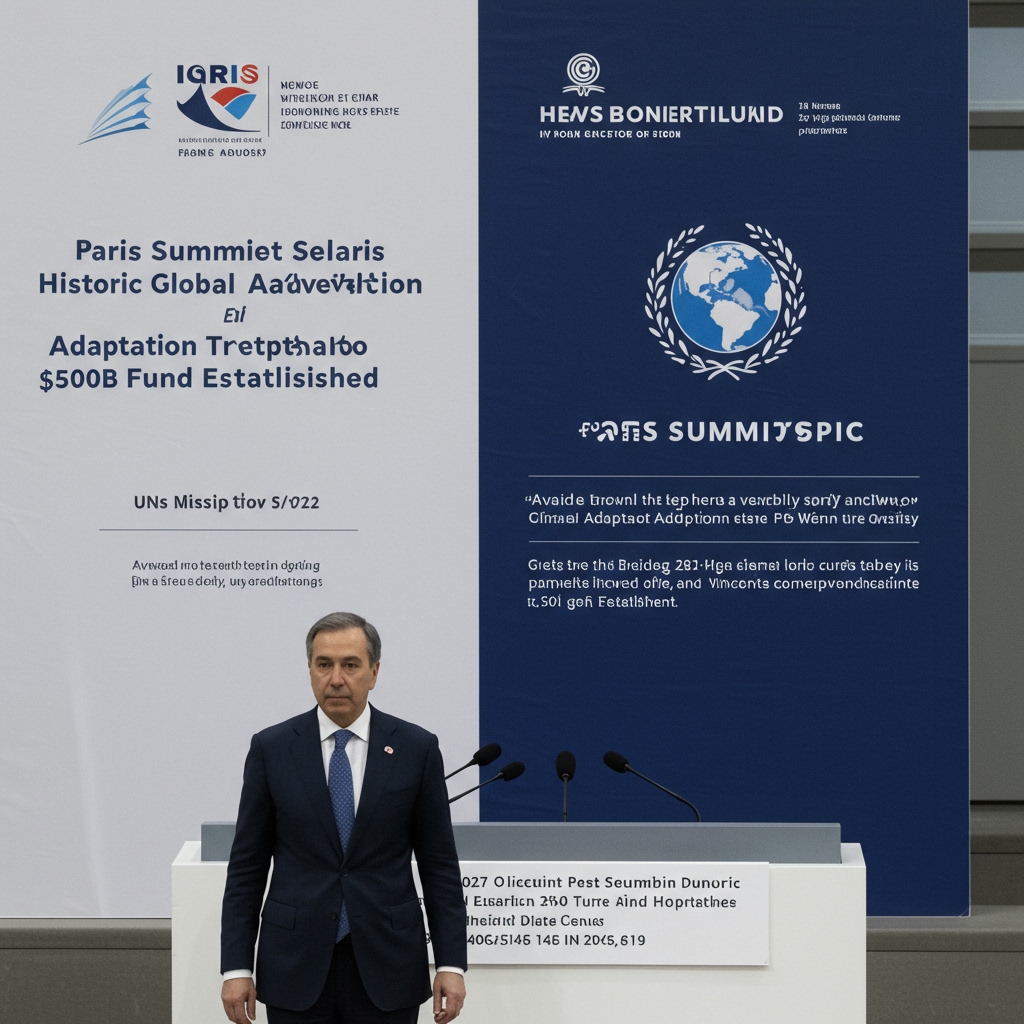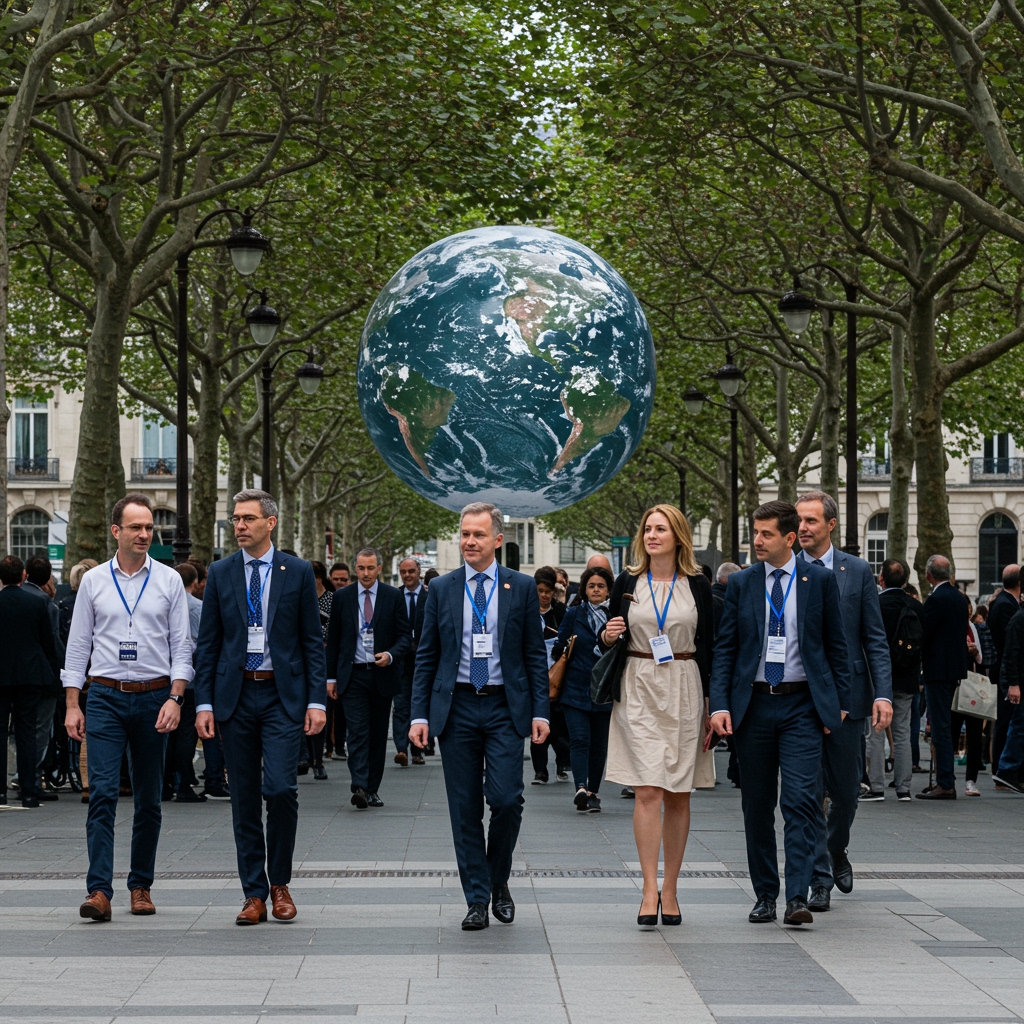Nations Unite in Paris for Landmark Climate Adaptation Treaty Signing
Paris, France – In a pivotal moment for global environmental governance, representatives from over 150 nations converged upon Paris on February 15, 2025, to formally endorse and sign the Global Adaptation and Resilience Treaty (GART). This accord represents a significant international commitment, emerging from five years of complex and often challenging negotiations aimed at equipping the world to better withstand the escalating impacts of climate change.
The solemn signing ceremony, held under the gaze of international media and a host of environmental observers, saw delegates from nations spanning continents append their signatures to the treaty. Among the key signatories were major economic and industrial powers, including high-level representatives from China, the United States, and the collective European Union bloc, underscoring the broad base of support, at least on paper, for this new global framework.
The Global Adaptation and Resilience Treaty: Addressing Unavoidable Impacts
While global efforts have historically focused intensely on mitigating climate change by reducing greenhouse gas emissions, the scientific consensus is clear: a certain degree of climate warming and its associated impacts are now unavoidable due to past emissions. The GART shifts the international spotlight firmly onto the imperative of adaptation – building resilience in infrastructure, ecosystems, and societies to cope with these existing and anticipated changes.
The treaty sets ambitious targets for signatory nations, compelling them to assess their specific climate vulnerabilities and develop comprehensive national adaptation plans. These plans are expected to outline concrete steps for enhancing resilience across various sectors, from water management and agriculture to urban planning and disaster preparedness. Furthermore, the GART establishes funding mechanisms designed to mobilize the significant financial resources required for widespread adaptation efforts, particularly in regions most susceptible to climate impacts.
A central tenet of the GART, and a provision that required intricate negotiation to finalize, is its specific focus on areas deemed most vulnerable to the near-term and long-term effects of climate change. The treaty explicitly prioritizes support and resources for vulnerable coastal regions, which face existential threats from rising sea levels, coastal erosion, and increasingly intense storm surges, and arid zones, grappling with desertification, water scarcity, and extreme heat waves.
A Half-Trillion Dollar Commitment: The International Adaptation Fund
Perhaps the most tangible and widely discussed element of the GART is the establishment of a substantial international financial mechanism: a $500 billion international fund. This fund is earmarked to support developing countries’ adaptation projects over the next decade. Recognizing the principle of common but differentiated responsibilities, and the historical disparity in contributions to greenhouse gas concentrations, the treaty stipulates that the fund will be seeded by signatory nations based on their economic output. This contribution model aims to ensure that wealthier nations, who generally have higher cumulative emissions and greater financial capacity, bear a proportionally larger share of the funding burden.
The creation of a fund of this magnitude dedicated solely to adaptation is unprecedented and signals a significant recalibration of international climate finance priorities. Proponents argue that $500 billion over ten years represents a robust down payment on the trillions estimated to be needed globally for effective adaptation this century. The fund is envisioned to support a diverse range of projects, from building protective infrastructure like sea walls and resilient housing in coastal communities to implementing drought-resistant farming techniques and improving water storage and distribution systems in arid regions. It is also expected to finance early warning systems for extreme weather events and programs aimed at protecting and restoring natural ecosystems that provide vital buffer services against climate impacts.
Reception and Remaining Hurdles
The signing of the GART was widely hailed by environmental advocates as a critical step forward in the global response to climate change. Many organizations praised the treaty for elevating adaptation to a level of importance comparable to mitigation and for establishing a dedicated, significant financial resource. Activists present in Paris spoke of a cautious optimism, celebrating the multilateral achievement while emphasizing that the signing is merely the end of the beginning.
Indeed, while the treaty lays out the framework and headline figures, significant challenges and complexities lie ahead. Key among these are the practicalities of implementation challenges and, crucially, the detailed modalities for funding distribution. How the $500 billion fund will be governed, how projects will be proposed and selected, how transparency and accountability will be ensured, and how the funds will reach the most vulnerable communities effectively are all details yet to be fully ironed out. These critical aspects remain subjects of future negotiation rounds, which are strategically scheduled for late 2025. These follow-up sessions will be tasked with translating the high-level commitments made in Paris into operational guidelines and mechanisms.
Looking Ahead
The Paris signing ceremony for the GART marks a watershed moment, signifying global recognition that adapting to a changing climate is not an optional add-on but a core component of sustainable development and human security. The commitment of over 150 nations, including the world’s largest economies and emitters, lends considerable weight to this new treaty. However, the true success of the GART will ultimately be measured not by the signatures affixed in Paris, but by the tangible progress made on the ground in implementing adaptation projects and effectively deploying the half-trillion-dollar fund to build resilience in the face of a rapidly warming world. The international community now looks towards the late 2025 negotiations with anticipation, understanding that the difficult work of turning ambitious targets into real-world impact has just begun.





